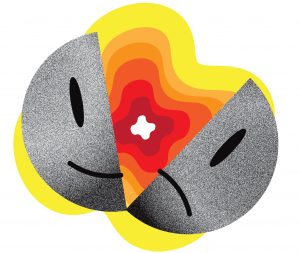Microbe rules underground, extends tree of life
March 3, 2016
Hades, the Greek god of the underworld, is no longer a myth.
UT microbiologist Brett Baker recently exposed a genetically unique microbe in the subsurfaces of South Africa, Yellowstone National Park and North Carolina. Because it is found underground, Baker chose to name this microbe “Hadesarchaea” after Hades, the Greek god of the underworld.
Not only do these subsurface microbes have a distinct name, but their genetic makeup gives scientists insight into the origins of humans and other complex organisms, according to Baker.
“The subsurface is the last frontier of understanding life on the planet because it hasn’t been studied extensively,” Baker said.
The archaea make up a group of microorganisms that scientists believe gave rise to eukaryotes, a class of multicellular organisms that includes humans. However, gaps existed in the theory linking archaea to eukaryotes. Baker bridged one of these gaps.
By sequencing and comparing the genomes of multiple Hadesarchaea, Baker and his team found that the microorganism produces energy through a metabolic process called carbon fixation. While carbon fixation is common in eukaryotes such as plants, it is rare in archaea.
According to Baker, studying Hadesarchaea’s unusual metabolic processes is helping to expand the genetic tree of life.
“Almost half of their genes are different from anything we’ve seen before,” Baker said. “Now that we have the genomes, it gives us a better idea of what this part of the tree of life looks like.”
Craig Linder, an associate professor of integrative biology at UT, said he is excited about expanding the tree of life.
“It’s one of the grand projects in biology,” said Linder. “We’re trying to determine the relationship between all the existing species on the planet, at the very least.”
Kiley Seitz, a marine science graduate student who works with Baker, said archaea and other microorganisms are responsible for processes that form the basis of life and can even have environmental uses.
For example, scientists discovered a bacterium called Thermus aquaticus in Yellowstone National Park that naturally produces Taq polymerase, a necessary enzyme in biochemical processes.
Because Hadesarchaea uses carbon from the atmosphere as an energy source, Baker believes that it could have applications in climate change. However, he will need to investigate the archaea further to reveal their potential uses.
“At the moment, we are just getting our first glimpse as to what these archaea are doing,” Baker said. “This is just one piece of the larger puzzle.”
For Seitz, this journey of discovery is far from daunting.
“The more that I don’t know, the more I want to go in and look at what could be here,” Seitz said. “What have we just been missing?”
Baker is now studying the microbes that live alongside Hadesarchaea in estuaries and gold mines to better understand the ecosystem as a whole.
“We’re exploring the unknown,” said Baker. “We don’t know what we’re going to find. It’s kind of like flying a spaceship to other planets.”











